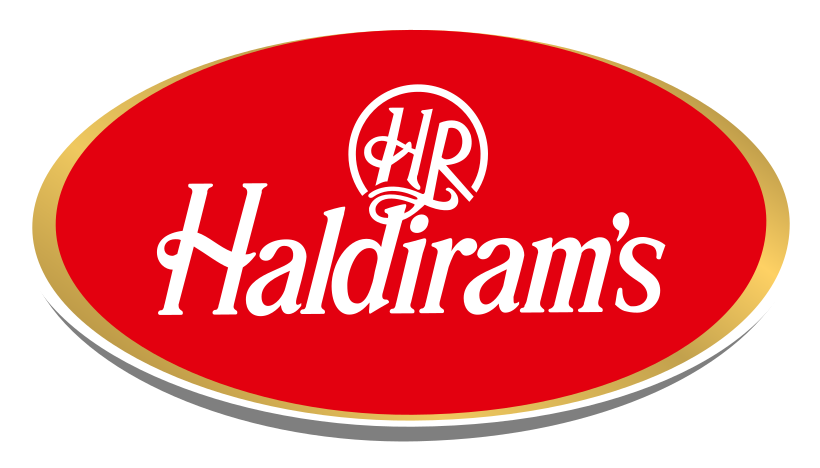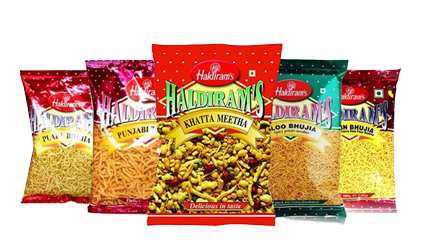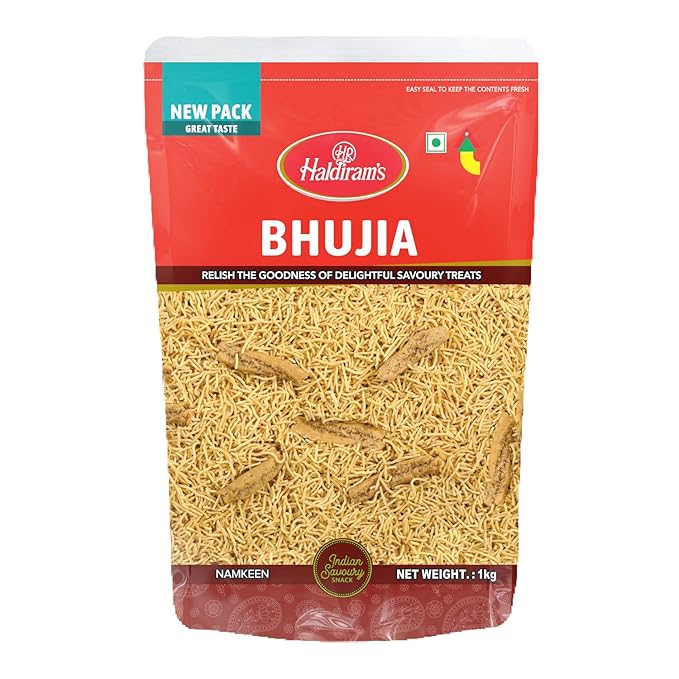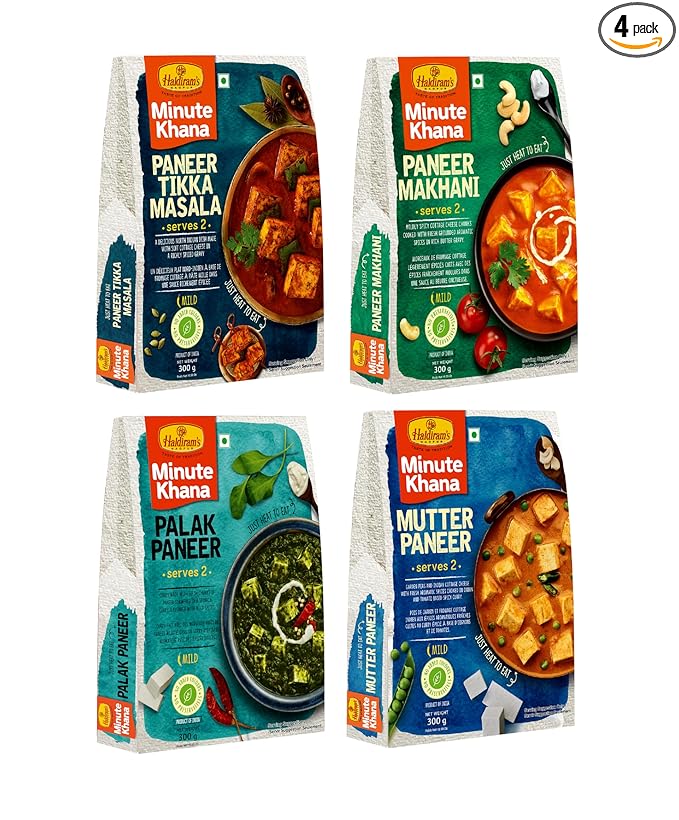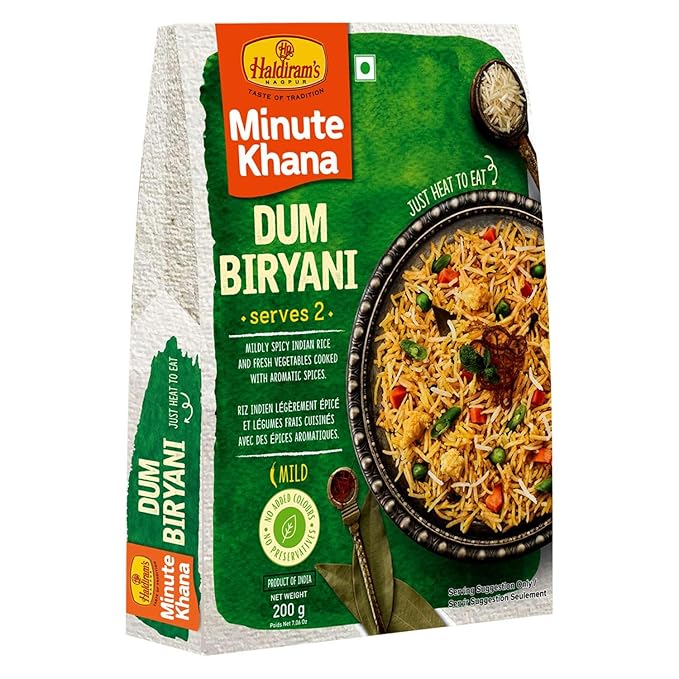Brand Overview
Brand:
Haldiram
Parent Company:
Ganga Bishan Agarwal, aka Haldiram
Core Categories:
Foods
Taglines Over the Years:
- Taste the Tradition
- Desh ka namkeen? (unofficially)
Market Context at Launch
1930s–1950s (Bikaner Beginnings):
- The Indian snacks market was fragmented and unorganized, dominated by local halwais and namkeenwalas.
- In 1937, Haldiram began by selling Bhujia in Bikaner with a unique twist: thinner strands, moong-based instead of traditional moth dal.
- This product differentiated Haldiram early and laid the foundation for brand-led namkeen.
- The business expanded from Bikaner to Nagpur, Delhi, and Kolkata, with different family branches managing different zones.
- Initially focused on namkeen and sweets in bulk or loose form, but gradually transitioned into branded packaging.
Marketing Mix (4Ps)
Product Strategy
Core Categories:
- Namkeen: Bhujia, Aloo Bhujia, Chana Dal, Navratan, Mixtures, etc.
- Sweets: Soan Papdi, Rasgulla, Gulab Jamun, Kaju Katli, etc.
- Snacks: Chips, Puffs, Instant Mixes
- Frozen and Ready-to-Eat: Parathas, Curries, Chole, Rajma, etc.
- QSRs and Restaurants: Casual dining serving Indian thalis, chaat, snacks.
- Extensive R&D to standardize traditional flavors.
- Use of modern packaging, hygiene, and automation while retaining “home-style” taste.
- Wide range across price points, from ₹10 namkeen packs to ₹1,000+ gift boxes.
Pricing Strategy
- Value-for-money orientation: affordable to the masses, but quality-focused.
- SKUs across sizes – ₹5/10 trial packs, ₹40–60 standard, premium gift packs ₹200+.
- Balanced volume-driven model in namkeen and premium margins in sweets, QSRs, and exports.
Promotion Strategy
Positioning:
- Initially built on word-of-mouth and product trust.
- Later, positioned as the gold standard for Indian namkeen and mithai.
- Now evolving into a modern Indian snacking and convenience foods brand.
- Minimal advertising in early decades – brand grew through in-store visibility and taste.
- Recent years: focus on TV ads, digital campaigns, influencer partnerships, and in-store experiences.
- Seasonal campaigns around festivals, family, homecoming, and gifting.
- Purity, hygiene, and homemade taste at scale.
- “When guests come home, serve Haldiram.”
- Festive joy, family bonding, and pan-India familiarity.
Distribution Strategy
- One of India's most robust FMCG distribution networks:
- Available in over 1 million outlets
- Presence in general trade, modern trade, and e-commerce
- Strong QSR footprint: 100+ casual dining restaurants in metros and Tier-2 cities.
- Massive export market: USA, UK, UAE, Australia, Southeast Asia.
- Frozen foods and ready-to-eat items distributed via refrigerated logistics to overseas Indian stores.
Competitive Landscape
Main Competitors:
- Bikanervala, Bikaji, Balaji, Pepsi Kurkure, ITC Bingo, DFM Foods (CRAX)
- In sweets: local mithaiwalas, Bikanervala, MTR, Havmor (ice cream sweets)
- In ready-to-eat: MTR, ITC Kitchens of India, Tata Sampann, Gits
Haldiram's Edge:
- Widest range under a single ethnic snacking brand.
- Strong emotional equity and trust in hygiene and taste.
- Multi-channel presence: QSR + FMCG + frozen + gifting.
- Global Indian diaspora loyalty.
Challenges & Strategic Responses
Challenges:
- Internal brand fragmentation (Nagpur, Delhi, Kolkata units function semi-independently).
- Low digital presence until the late 2010s.
- Regulatory scrutiny over food labeling and hygiene.
- Modern snacking preferences evolving – baked, healthy, vegan, etc.
- Launched online D2C platform and partnered with Swiggy/Zomato.
- Forayed into health-focused snacks (low-fat Bhujia, baked sev, millet-based snacks).
- Renovated restaurants with modern aesthetics and digital menus.
- Invested in centralized production tech to ensure scale + consistency.
- Expanded frozen and ready-to-cook lines to meet urban time-crunch demand.
Consumer Perception & Emotional Connect
- Viewed as the most trustworthy name in Indian snacks.
- High recall for gifting, festivals, travel snacks, train journeys, and family occasions.
- Stands for “familiar taste across generations” – strong loyalty among NRIs.
- Emotional connect with Indian values of hospitality and celebration.
Impact & Legacy
- Pioneered the packaged Indian snacks category.
- Helped move mithai and namkeen from unbranded to branded.
- Created one of India's few homegrown food FMCG empires with global reach.
- Recognized for scale + tradition – a case of successful Indianization of FMCG.
Current Position (as of 2025)
- Estimated group revenue: ₹10,000+ crore across all entities.
- Among India's top 3 FMCG snacking brands.
- Over 100 countries export footprint.
- Fast-growing online and QSR verticals.
- Eyeing IPO and professionalization in several family units.
Key Learnings
- Taste-led trust can outlast even aggressive advertising.
- Multi-category mastery (namkeen, sweets, RTE, QSR) creates resilience.
- Family-run businesses must institutionalize for scale.
- Evolving with health, convenience, and digital expectations is essential.
Summary
Haldiram is a rare Indian-origin brand that has successfully blended tradition and scale. From hand-made Bhujia in 1937 to automated snack factories, digital-first QSRs, and global exports in 2025, the brand has bridged generations, regions, and taste preferences. It remains one of the most beloved and resilient food brands in India, built on trust, taste, and timelessness.

